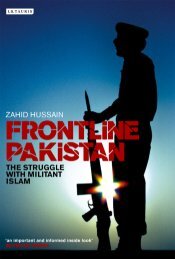Who Owns Pakistan - Yimg
Who Owns Pakistan - Yimg
Who Owns Pakistan - Yimg
You also want an ePaper? Increase the reach of your titles
YUMPU automatically turns print PDFs into web optimized ePapers that Google loves.
was to become the nucleus of an empire that now embraces in its fold 14<br />
companies including seven textile mills, a big fibre plant and a cement factory.<br />
Both <strong>Pakistan</strong> Peoples Party (PPP) of Z A Bhutto and Awami League (AL) of<br />
Mujeb-ur-Rehman, which emerged as the biggest parties in the 1970 elections in<br />
West <strong>Pakistan</strong> and East <strong>Pakistan</strong> respectively had promised nationalization. The<br />
20,000 worded manifesto of PPP had clearly declared that " all banks and<br />
insurance companies will be nationalized and all major sources of production will<br />
be placed in the public sector.<br />
The manifesto specifically referred to the need for the elimination of monopolies<br />
and said that " the concentration of wealth ( in <strong>Pakistan</strong>) is so excessive that the<br />
benefits of industrialization are being passed on neither to the wage-earners nor<br />
even to greater part of the middle class". It identified Iron and steel, non-ferrous<br />
metals, heavy engineering, machine tools, chemicals, shipbuilding, motor<br />
assembly and manufacturing equipment for electric power production, distribution<br />
and use, electronics, production of arms, ammunition and armaments, cement<br />
and paper industry to be placed in the public sector.<br />
However, the transfer of power was delayed because of the procrastination of<br />
President General Yahya Khan and the friction between the two main political<br />
parties. That gave ample time to the national press and the business community<br />
to debate the merits and demerits of nationalization and its consequences.<br />
Nawab Haider Naqvi, in an article published in the daily Dawn of February 2,<br />
1971, forcefully argued against the nationalization of banks on the ground that it<br />
would create an administrative nightmare. He rebutted the argument that banks<br />
had facilitated the concentration of wealth in few hands and pointed out that the<br />
size and composition of credit, flowing from the banking system is determined by<br />
the fiscal, investment and commercial policies of the govt and it were these<br />
policies rather than the banks which promoted concentration of wealth in few<br />
hands.<br />
" The important point to note is that the govt has stretched every nerve to cause<br />
resource flow in industrial sector to trigger growth, while a virtual freeze has been<br />
imposed on wages. The industrialists have been drugged with extra strong<br />
incentives like accelerated depreciation allowances......We should not nationalize<br />
banks for the wrog reasons. The nationalization should be positive one. The<br />
economic rationale behid such a move should be clearly spelt out. We should<br />
settle for the second best i.e the banking system in private hands regulated by<br />
the State Bank, because nationalization is administratively infeasible", he<br />
concluded prophetically.<br />
Private sector, used to pampering by govt did not view the threat of<br />
nationalization seriously and like an ostrich burying its head in the sand, kept<br />
denying the obvious. Advertisements were placed in the newspapers trying to<br />
14













